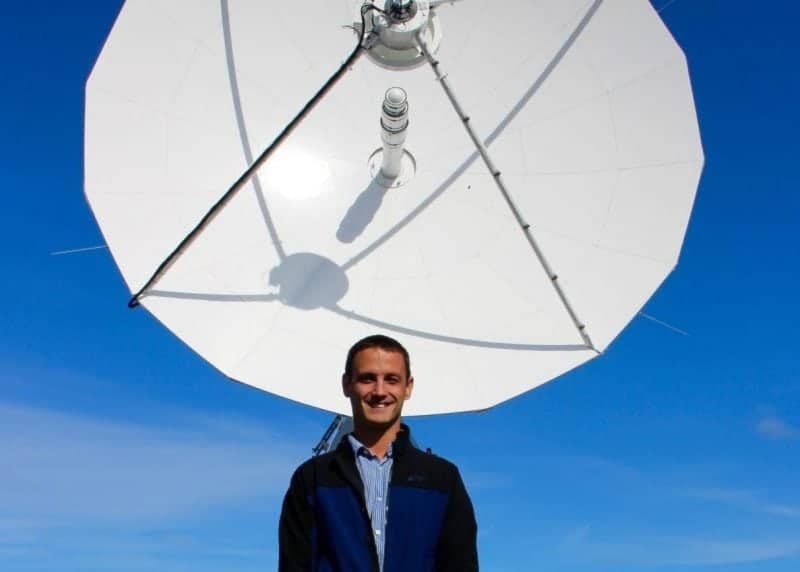In a community that is currently experiencing an economic downturn, four gigantic antennae at the Inuvik Satellite Station Facility stand as something of a monument to hope.
Canadian, German, French and Swedish governments are all invested in the federal ground station between Inuvik and the airport.
The antennae wait for passing satellites. A loud buzzer sounds, and within a minute the huge machines quickly contort and twist themselves to follow the speeding space objects, downloading data and sending it south on the Mackenzie Valley Fibre Link.
Those four are only the beginning. Seen from the hill they sit on is a road that forks into three, preparing an area for up to 17 more.
“That’s the future,” says Jiri Raska, station manager of the Inuvik Satellite Station Facility, whose giddy excitement about the industry is readily apparent in his smile and enthusiasm for what’s happening up on that one hill in town.
The antennae mostly track polar-orbiting satellites. Satellites make several passes over the poles in a day, some circling the Earth up to a dozen times.
“It’s unreal how they don’t knock into each other,” remarks Raska. “There are over 1,200 of them up there and active.”
He’s the first manager at the facility and has been on the job for just a few weeks. His role is largely to educate and involve the community in the industry.
That will include school trips to the station, tours, artwork painted on the dishes themselves and anything else that helps the community take ownership of the station.
“From a standpoint of someone who lives here, there aren’t a lot of opportunities that do come up here and stay,” said Raska. “This is one that will stay.”
Construction might ebb and flow, but the facility will always be of use to the community, whether it’s in inspiring students to pursue science, technology, engineering and math careers or other opportunities.
“Sky’s the limit when you have high tech in your backyard,” said Raska. “That’s something we’re only starting to open our eyes up to.”
Natural Resources Canada invested $16 million to install the antennae and operations building and another $4 million into the roads. The French, German and Swedish space agencies spent approximately $22 million on their equipment at the site.
One of the first community outreach projects will be an event for Geographic Information Systems Day Nov. 15. Raska hopes to involve students at the facility for that celebration. Look for more information closer to the date.
